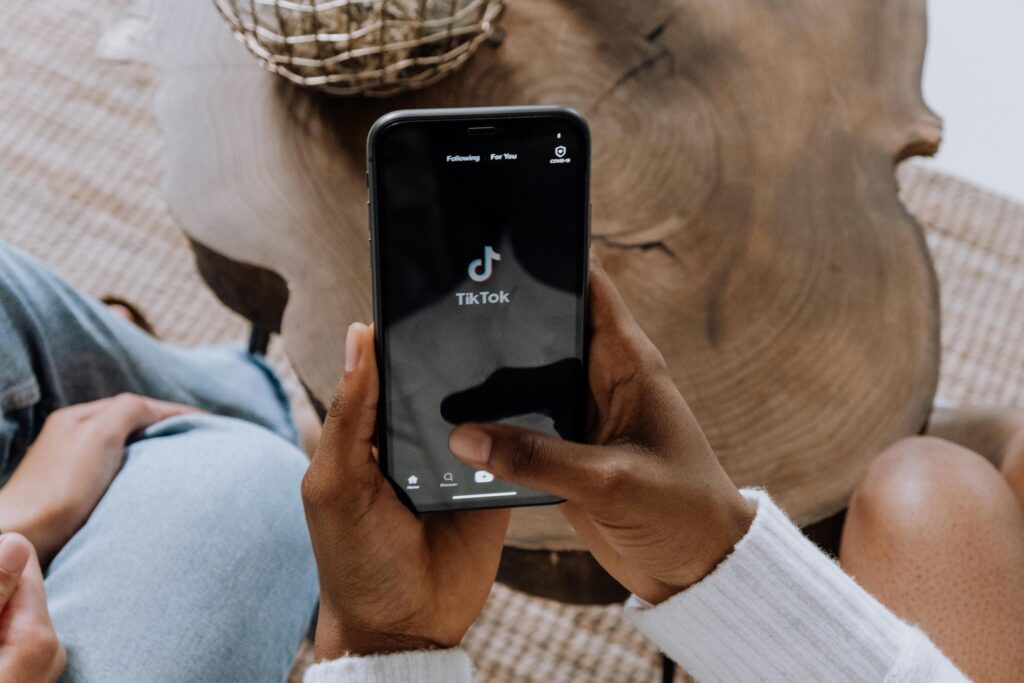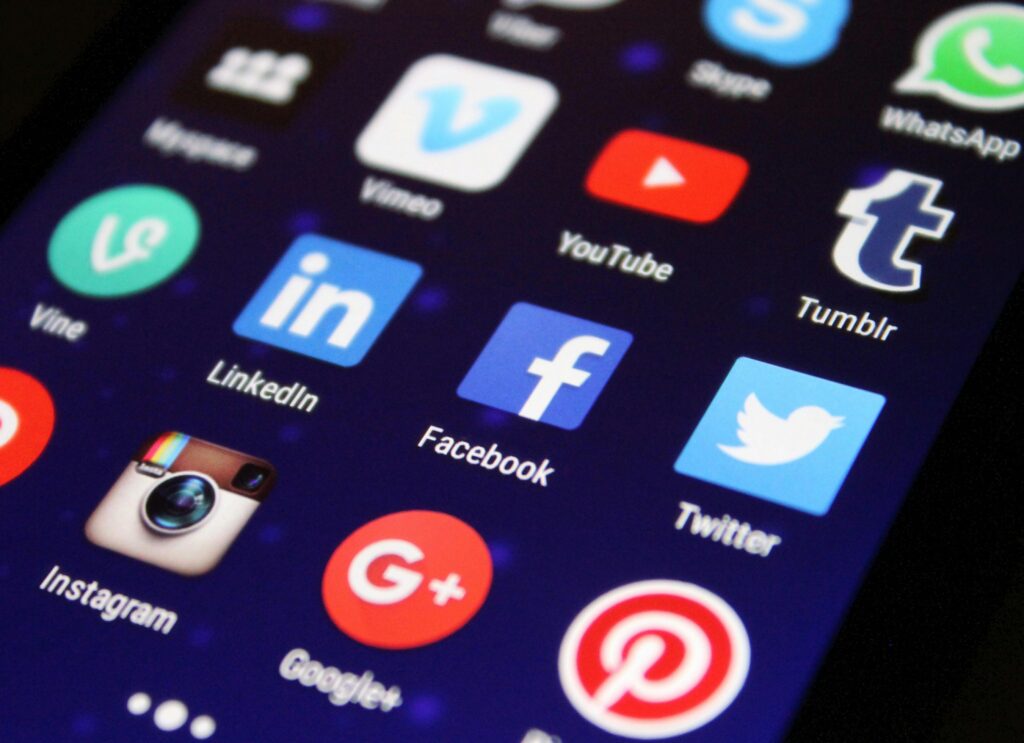Gone are the days when fashion brands had to pour huge amounts of money into TV commercials, radio ads, or massive billboard campaigns just to get noticed.
Back then, breaking into the public eye meant competing with the biggest players and spending big to be seen.
But the game has changed.
Thanks to the rise of social media and influencer marketing, reaching your audience is now faster, more direct, and—best of all—more accessible.
What once required six-figure budgets can now be achieved with a single post from the right person. It’s no surprise that influencer marketing has exploded in popularity.
In fact, between 2019 and 2023, the global influencer marketing industry more than doubled in size, reaching an impressive $21.1 billion.
Fashion brands, in particular, have embraced this shift, recognizing the power of personal connection over traditional ads.
In 2021 alone, U.S. companies spent nearly $4 billion on influencer marketing, and that number has only grown since.
Whether you’re launching a new fashion label or looking to breathe new life into your social media strategy, understanding how influencer marketing works—and how to make it work for your brand—is essential.
In this guide, we’ll break down everything you need to know, from finding the right creators to boosting your social media metrics and building lasting relationships that drive real results.
What’s Influencer Marketing?
Influencer marketing is all about teaming up with content creators to help spread the word about your brand online.
That could mean anything from product shoutouts on social media to affiliate links or even live collaborations during events and streams.
Fashion brands have a unique edge here. Clothes and beauty products aren’t just things we wear—they’re how we express who we are.
Whether someone’s starting a new job, going through a breakup, or just stepping into a new version of themselves, fashion plays a big role in telling that story. And influencers are often the ones helping people find and share their style.
Fashion Influencer Marketing Stats
Fashion is one of the biggest players in the influencer space—and it’s only getting bigger.
In 2023, the fashion influencer marketing industry was worth about $4.54 billion, and by 2027, it’s expected to reach $14.82 billion.
Unlike super-niche industries, fashion and beauty speak to a wide range of people.
That makes them ideal for influencer partnerships. Whether it’s styling tips, a closet refresh, or advice on dressing for your body type, there’s no shortage of ways to connect with audiences.
Here are a few stats that show just how big the impact is:
In a 2020 survey, 89% of marketers said Instagram was their go-to platform for influencer campaigns.
TikTok has seen explosive growth.

There were just 16,400 influencers in 2018, and that number shot up to 106,000 by 2020.
Beauty and cosmetics made up 38% of influencer marketing revenue in 2019, leading the pack.
North America is the biggest market, accounting for 35% of global fashion influencer marketing.
Why influencer marketing is a powerful tool for your online fashion store:
Influencer marketing is one of the most effective strategies for growing an online fashion store. Here’s why:
1. Builds Trust and Authenticity
Consumers are becoming more skeptical of traditional ads. Influencers, especially micro and niche influencers, have built strong personal relationships with their audiences.
When they promote your fashion brand, it’s often seen as a trusted recommendation rather than a sales pitch. This peer-to-peer credibility leads to higher engagement and better conversion rates.
2. Reaches a Highly Targeted Audience
Influencer marketing allows you to tap directly into communities that are already interested in fashion.
Whether you’re selling streetwear, minimalist basics, or luxury pieces, there’s an influencer with a following that mirrors your ideal customer.
Why this matters: You skip the guesswork and go straight to an audience that’s more likely to buy.
3. Boosts Brand Awareness Quickly
A single post from a well-known fashion influencer can introduce your brand to thousands—even millions—of potential customers.
This exposure helps establish your store’s presence in a highly competitive market.
Pro Tip: Collaborate with multiple influencers across platforms (Instagram, TikTok, YouTube) to amplify your reach.
4. Provides High-Quality Content
Influencers are content creators. They know how to style, shoot, and present fashion in a visually appealing way.
This user-generated content can be repurposed for your website, ads, and social media.
Benefit: It saves time and money on photoshoots while keeping your brand visuals fresh and authentic.
5. Drives Sales and ROI
Influencer marketing, especially when paired with discount codes, affiliate links, or exclusive drops, creates a sense of urgency and encourages immediate purchases.
Stat boost: According to Influencer Marketing Hub, influencer campaigns can generate up to $5.78 ROI for every $1 spent, depending on strategy and industry.
6. Strengthens Social Proof
Social proof—seeing others use and enjoy your products—has a powerful psychological effect on buying behavior.
When followers see their favorite influencer wearing your clothing, they’re more likely to perceive it as stylish, trustworthy, and in demand.
7. Helps You Stay Trend-Relevant
Fashion moves fast. Influencers are typically ahead of the curve when it comes to trends.
Collaborating with them keeps your brand in tune with current styles, culture, and seasonal preferences.
The Ultimate Guide to Influencer Marketing for Fashion Brands
It’s difficult to establish a fashion firm. Simply having excellent items is insufficient to distinguish oneself in a competitive market.
Influencer marketing can assist with this. When done correctly, it can increase visitors to your website, generate buzz about your business, and even boost sales.
But here’s the thing: simply pouring money into a few Instagram photos will not cut it. You need a true plan that is authentic and connects with people. That is exactly what this article is designed to assist you with. Let’s begin!
1. Establish a Specific Goal First
Ask yourself what you truly hope to gain from this before you even consider contacting influencers. Influencer marketing isn’t universally applicable. The stage of your brand and the goals you have in mind will determine your strategy.
What is your primary objective?
Increasing Awareness of Your Brand. If you’re new to the market (or rebranding), getting recognized is more important than making quick sales.
The appropriate influencers can help you establish trust, start conversations, and introduce your company to their audience.
You’ll know it’s working when you start seeing more people engaging with your content, following your brand, and mentioning you online.
Bringing More People to Your Website – If your focus is driving traffic, you need influencers whose followers actually do stuff, not just like and scroll past.
These creators can inspire people to check out your website, sign up for your newsletter, or explore your latest collection.
Use UTM links and custom landing pages to measure traffic accurately.
Boosting conversions or sales: Whether launching a new collection or clearing out seasonal inventory, work with influencers who have a proven track record of influencing purchasing decisions. Affiliate links, discount codes, and tracked campaign URLs can help measure ROI precisely.
Growing your social media presence: Collaborate with influencers who create engaging content and have high follower interaction to spark organic growth and new follower acquisition.
Clearly articulating your goals will influence not only who you work with but also how you structure your collaboration, what kind of content you co-create, and how you measure campaign performance.
2. Identify the Right Influencers for Your Brand
Alignment, not just audience size, is key when selecting the proper influencers. Quality and compatibility should be given priority over just pursuing big names.
Consider prospective partners using the following criteria:
Relevance: Does their individual content, style, and aesthetic complement the essence of your brand?
Even if your business has never been featured before, are they already interacting with your ideal client?
Getting involved: Vanity metrics like follower numbers should be ignored. Take note of the caliber of conversation on their posts.
Are people commenting thoughtfully or just leaving emojis? High engagement indicates a strong connection and trust with their audience.
Look at the demographics of the audience, such as their age, gender, location, and hobbies.
Are they speaking to your target audience? This is crucial because if an influencer’s audience is not comparable to your target demographic, even with high levels of interaction, their impact will be limited.
Reach and influence level: 100,000–10,000 nano-influencers: have audiences that are extremely engaged and specialized.
Micro-influencers (10K–100K): These individuals are ideal for new brands because they provide a fantastic balance between involvement and reach.
Although they may be costly and have fewer interactions per follower, macro/celebrity influencers (100K+) offer high awareness.
Advice: You can assess influencers’ legitimacy and fit with your objectives by using tools like HypeAuditor, Upfluence, or even manual vetting through social network statistics.
3. Choose the Most Effective Platform(s)
Your choice of platform should reflect where your target audience spends their time and how they consume content. Each platform lends itself to various content formats and marketing outcomes.
Instagram excels at visual storytelling—perfect for fashion-forward photo shoots, Reels, carousel posts, and behind-the-scenes Stories.
It’s ideal for creating aesthetic value and connecting with a style-conscious audience.

TikTok is ideal for short-form, personality-driven, and trend-related material.
TikTok influencers can gain tremendous viral traction, particularly through innovative styling videos, day-in-the-life fashion routines, and haul videos.
YouTube: Suited for long-form content such as in-depth reviews, try-on hauls, seasonal lookbooks, or styling tutorials. Offers high viewer retention and detailed product exposure.
Pinterest: Evergreen content platform, excellent for driving consistent long-term website traffic. Ideal for curating mood boards, style inspiration, and linking directly to product pages.
Threads/Twitter (if applicable): Useful for building thought leadership, community interaction, or sharing brand voice in a more casual, text-based format.
Choose one or two platforms where your customers are most active, and tailor influencer partnerships accordingly.
4. Develop a Compelling Offer for Influencers
Influencers receive dozens of pitches, often daily. Your outreach must be personalized, respectful, and offer clear value to stand out.
Think of your pitch as a two-way partnership, not just a transaction. Your offer could include:
Gifting: Send free products, especially new launches or curated packages, made to the influencer’s style. For small brands, this is a low-cost way to initiate contact.
Paid collaborations: Offer a fee in exchange for agreed-upon content deliverables. Be transparent about usage rights, timelines, and expectations.
Affiliate programs: Provide unique discount codes or tracked links so influencers earn a commission for every sale they drive, motivating performance-based content.
Exclusive perks: Early access to launches, invitations to events, or custom collaboration opportunities can create long-term loyalty and excitement.
Long-term partnerships: Instead of one-off posts, suggest a recurring monthly feature or mini-campaign that allows the influencer to tell a deeper story over time.
Be crystal clear about deliverables: how many posts, on which platforms, the type of content (Reel, Story, YouTube Short), timelines, and whether they need to tag your account or use specific hashtags.
5. Collaborate Creatively and Respect Their Voice
While your brand must be properly represented, avoid micromanaging the creative process.
Influencers thrive when they can communicate with their audience authentically. Set explicit brand guidelines while allowing their personality to flourish.
Collaboration opportunities are available for several popular content types:
– Outfit of the Day (OOTD) Posts – These are perfect for showcasing how your products fit seamlessly into everyday wardrobes, helping potential customers visualize their versatility.
– Unboxing Experiences – Eye-catching packaging and a well-presented unboxing moment can create excitement, spark curiosity, and leave a lasting first impression on your audience.
Styling challenges and tips: Showcase versatility by demonstrating how a single piece may be worn in multiple ways.
Try-on hauls and lookbooks: Especially effective on YouTube or TikTok for immersive product experiences.
Story takeovers or behind-the-scenes features: Let influencers bring their audience into your brand world for a day.
Reusing content can be a powerful way to level up your marketing without constantly creating something new.
With permission, you can share customer-generated content in emails, website galleries, ads, and social media.
This not only makes your brand feel more authentic, because real people are sharing real experiences, but it also saves you time and money.
6. Keeping Track of What Works
To know if your marketing efforts are paying off, keep an eye on the numbers. Go back to your original goals and set clear, measurable targets.
Pay attention to engagement—likes, comments, shares, and saves. These indicate whether your content is genuinely connecting with your audience and driving conversations.
Reach and Impressions – These metrics reflect how many people have seen your brand and help you analyze its visibility.
Traffic: Use UTM parameters or unique links to determine how much traffic each influencer brought to your website.
Conversions: Sales made using discount codes or affiliate links. Calculate the cost per conversion to determine profitability.
Follower growth: Did your brand’s social media accounts experience an increase during or following the campaign?
To efficiently collect and analyze data, use tools such as Google Analytics, Shopify analytics, or influencer marketing platforms (for example, GRIN, Aspire).
7. Nurture Long-Term Influencer Relationships
One-time posts may boost traffic or engagement, but long-term influencer marketing is built on trust and consistency.
When influencers sincerely love your products, their audience notices, and honesty yields stronger results.
To develop long-term relationships:
Maintain a warm and consistent communication style. Celebrate mutual success (e.g., reshare their post, promote their accomplishments, or send a thank-you gift).
Involving them in product development or campaign ideation demonstrates that you value their feedback.
Offer exclusive benefits to repeat partners, such as first dibs on upcoming releases or higher commission rates.
Loyal influencer advocates become brand ambassadors, offering consistent, trustworthy marketing that grows alongside your business.
Conclusions
Influencer marketing can help your online fashion store, but only if done correctly.
Focus on meaningful collaborations, make your strategy for your goals, and always value authenticity.
With the right influencers on your side, your business can reach new audiences, establish trust, and develop even faster than before.

